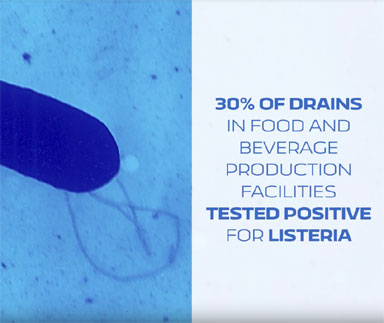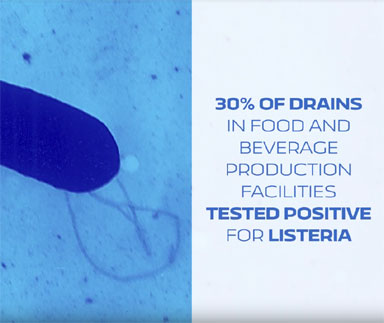
Nine people hospitalized for illness and three dead from eating frozen vegetables. 19 people in the hospital after eating bagged salad, with one person dying. Ten people across four states hospitalized and three dead after eating ice cream. The cause in all three cases? Listeria in the production facility.
Stories like these are a nightmare come true for those working in food production industries. You pride yourself on delicious, safe products and hold yourself to the highest sanitary standards. Still, these deadly outbreaks keep happening. What can you do to prevent listeria in your facility?
What Is Listeria?
Listeria (Listeriosis) is a serious infection caused by the germ Listeria monocytogenes. People usually contract listeriosis from eating contaminated food. Pregnant women, newborns, older adults, and people with weakened immune systems are especially vulnerable to listeria infections.
Every year, about 1,600 people get listeriosis in the United States. Most people are hospitalized, and about one in five people with the infection die. The mortality rate from listeria is higher than other food borne illnesses.
Listeria is also dangerous during pregnancy. When a pregnant woman contracts the disease, it can cause miscarriage, stillbirth, or newborn death.
Where Does Listeria Come From?
Listeria is widespread in the environment. You can find it in soil, water, sewage, and decaying vegetation. This means it can also be widespread throughout food production facilities.
In addition, listeria continues to grow even in cold environments and can survive freezing temperatures, which means refrigerated and frozen foods are still at risk. Plus, foods contaminated with listeria do not look, smell, or taste any different from non-contaminated foods.
Listeria can grow into biofilm, which makes it difficult to kill and remove from surfaces. It thrives in wet, dark places like floor drains.
Why Worry About Floor Drains?
Many food processing facilities focus their sanitation efforts on surfaces that come into contact with ready-to-eat (RTE) food, and rightly so. Obviously, any germs here would be transferred directly to the food and then to the consumer. These areas must be kept spotless, and employees are well-trained to wear gloves and use sanitized utensils and containers.
But what about areas that don't come into contact with food during production? If any food falls on the floor, you'll obviously throw it away, so why does it matter if it's contaminated with listeria?
Spreading Listeria From Your Drains
The truth is, it's fairly easy for listeria to spread from your drains to RTE food in your facility.
- Employees can spread listeria to clean areas by walking over contaminated trench drain grates.
- Fruit flies and other insects can carry listeria from a contaminated drain to production equipment.
- Listeria can spread easily during drain cleaning. If you use a pressurized washer to clean your drains, the water blast carries the listeria through the air and onto your equipment. Using scrubbing brushes and buckets to clean drains also leads to this type of cross-contamination.
- Flooded drains spread listeria. A clogged drain results in a pool of contaminated water on your production floor, which then spreads listeria during clean-up.
What You Can Do
The FDA provides guidance for controlling listeria in RTE food production facilities. Among their recommendations for trench drains:
- Employees who clean drains should not handle food or touch food preparation surfaces unless they first change their uniforms and footwear, wash and sanitize their hands, and put on clean gloves.
- Maintenance personnel in food production areas should follow the same hygiene requirements as production employees.
- Carefully design trench drainage systems to eliminate the chances of standing water and backups.
- Design drains so that they are accessible for cleaning and prevent bacteria growth.
- Clean and sanitize floor drains in a way that prevents contamination of other surfaces in the room.
- If a drain backs up and water flows into food preparation areas, stop food production until you fix the drain and clean the area.
The Importance of Trench Drain Design
The FDA recognizes how important it is to design trench drain systems with cleanliness in mind. Slot Drain Systems for food and beverage industries make these design recommendations a reality.
Slot Drains are easy to clean. Their unique design reduces cross-contamination from liquids splashing out of trenches. Specialized cleaning instruments clean the drain thoroughly without spreading bacteria to food contact surfaces.
Slot Drains also resist biofilm contamination. The 100% stainless steel option and smooth edges inside the drain remove places for bacteria to hide and grow. Plus, you don't have to worry about contaminated, hard-to-clean grates.
If you're worried about listeria in your trench drainage system, contact us to learn more about the unique advantages of Slot Drain systems.
Learn about Slot Drain® System's clean in place (CIP) features by downloading the Science behind CIP E-Book.
Food Safe Drains contains several articles for food and beverage facilities researching the best types of drain systems for their applications.



